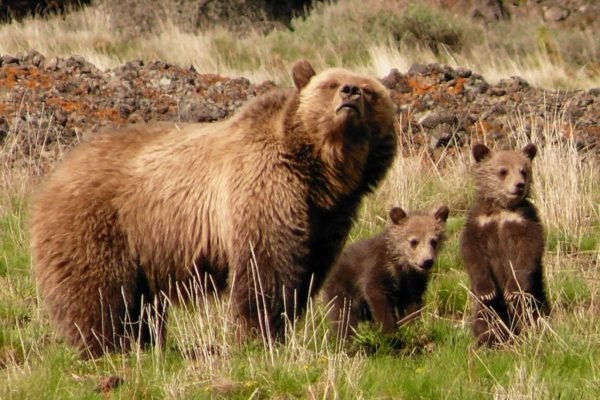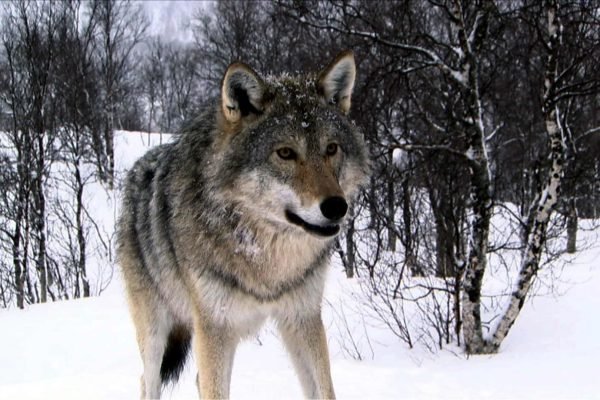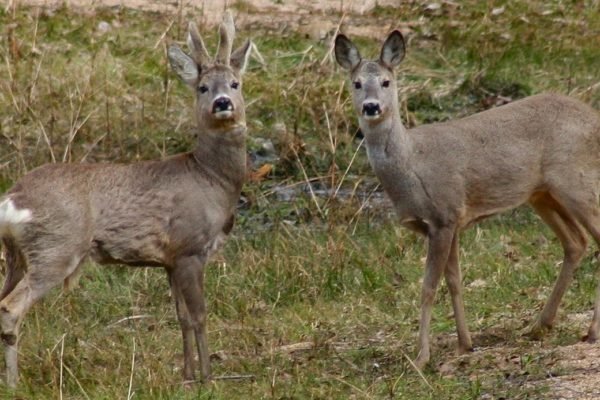Ursus arctos
Mammals
BROWN BEAR (lat. Ursus arctos)
Despite the uncontrolled killing of bears and systematic destruction of large forest areas, their natural habitat, the largest land-based beast, which used to be widespread all over Euro-Asia and Northern America, has succeeded in surviving in certain parts of Europe (the area of Dinaric Alps, Scandinavia and Carpathians). Today, this is a rare and protected animal. Even though it belongs to the species of largest land-based carnivals, with strong canine and short digestive system, typical for carnivals, the nourishment of the brown bear consists 90 % of plants. In spite of various stories of its aggressiveness, the truth is a bit different: The bear in nature escapes from the man who he can smell, thanks to its extraordinary sense, from a long distance. Mothers are aggressive, but only when their cubs are endangered.
WOLF (lat. Canis lupus)
Wolf has been the most widespread beast on planet since the beginning of intensive agriculture and cattle raising (it was numerous in entire Europe, Asia and North America). Today, it is recognized as a forest animal, which is a consequence of the fact that men pushed them out of wide open spaces long ago. This drastic decline in numbers has brought about the wolf to be protected with three international agreements in Europe. Wolf is a social animal, it lives in packs, where certain rules apply and all the members of the pack abide them.
BALKAN LYNX (Lynx lynx ssp. balcanicus)
Balkan Lynx was registered into IUCN Red list as a critically endangered species in 2015. It can reach 65 cm in height and 25 kg in weight and is recognizable for its triangle-shaped ears with a tuft on top, short tail and yellowish fur with dark spots. Researches done in the previous years in Montenegro, Macedonia, Albania and Kosovo have shown that their number is less than 50. In the NP Prokletije in Kosovo, cameras spotted one lynx in 2014.
ROE DEER (lat. Capreolus capreolus)
Roe Deer is a game of the forest edges, widespread in the area of central Europe and Asia. Its behavior belongs to a so called distant type, because they avoid life in larger formations. However, they join in herds in late autumn and stay in them till spring. This joining is instinctive and justified by the influence of external factors. There is a kind of internal organization inside the herd that keeps it together and gives the feeling of security. The leader of the herd is usually a doe that leads the fawns. Just before giving birth to new fawns, does break the link to last years’ ones.
BALKAN CHAMOIS (lat. Rupicapra rupicapra balcanica)
Balkan Chamois is sub-species of the chamois which inhabits Serbia, Kosovo, Bosnia and Herzegovina, Bulgaria, Croatia, the north of Greece (Pind), Macedonia, Albania, Montenegro and Slovenia. They used to be widespread in forests in the past, but due to people activities, they were banished to high mountains. They now represent the endangered species of ungulates (hoofed animals). Outside Europe, they can only be found in New Zealand. They were imported there in 1907 as a gift of Austrian emperor Franz Joseph I. As they found outstanding living conditions there, their population has grown fast and this species is not endangered today. New Zealand’s Department of Conservation encourages the hunting of chamois in order to limit their impact on native flora.







